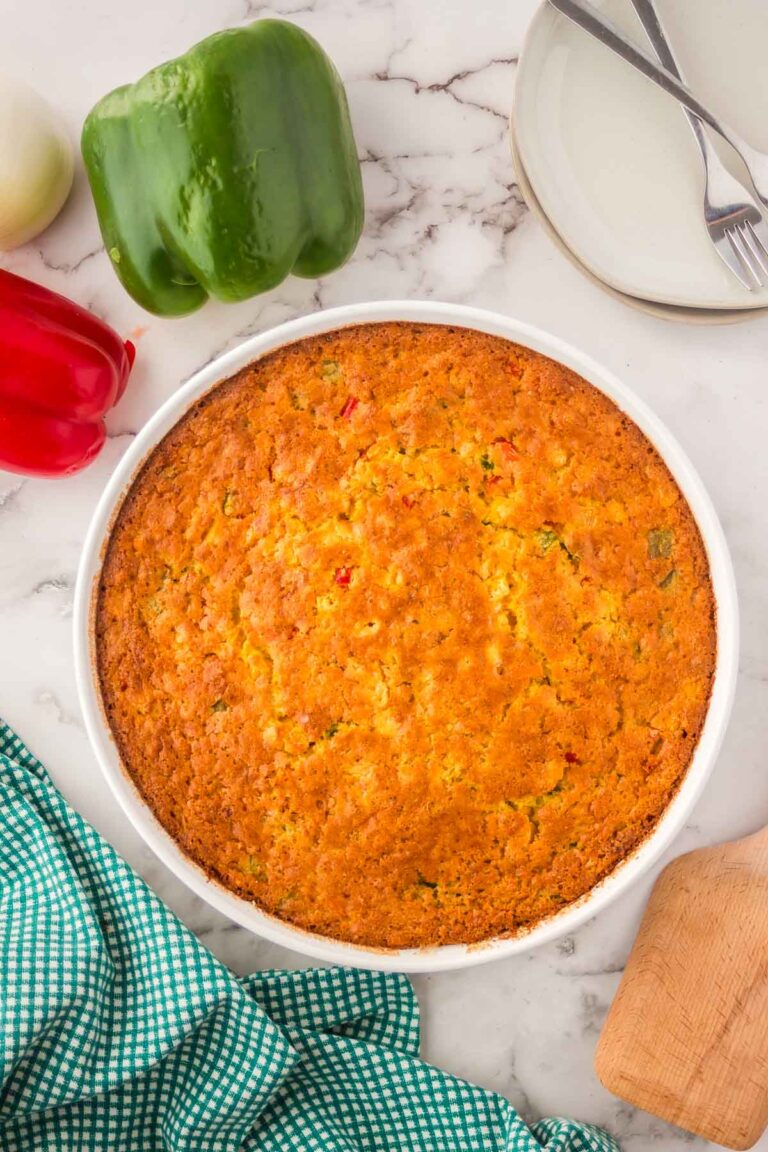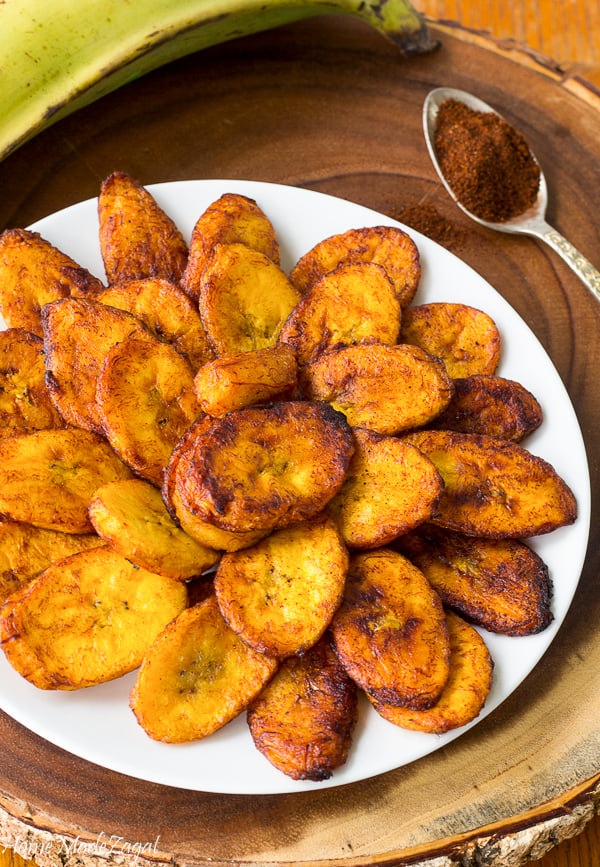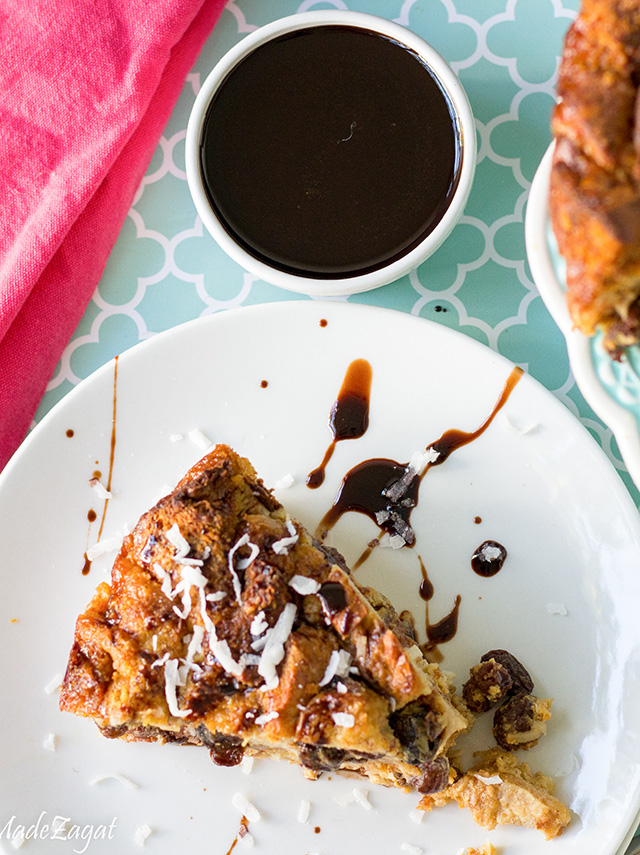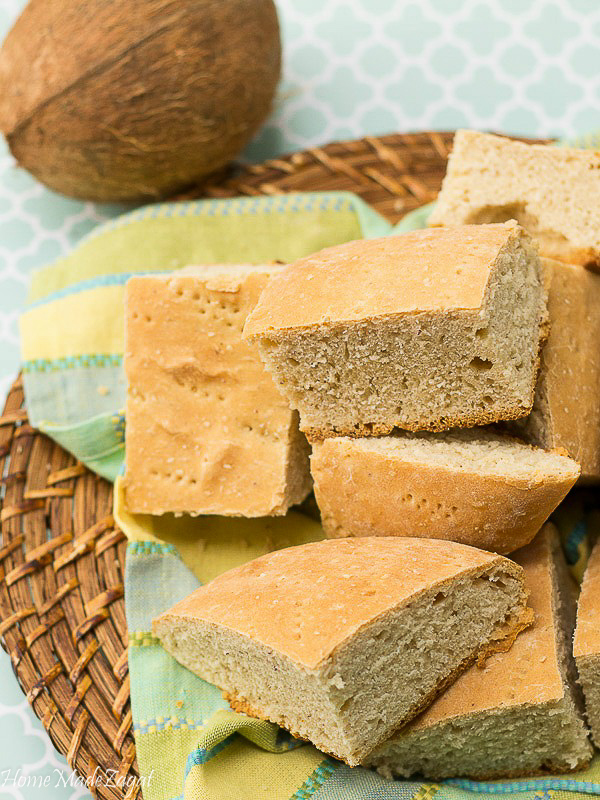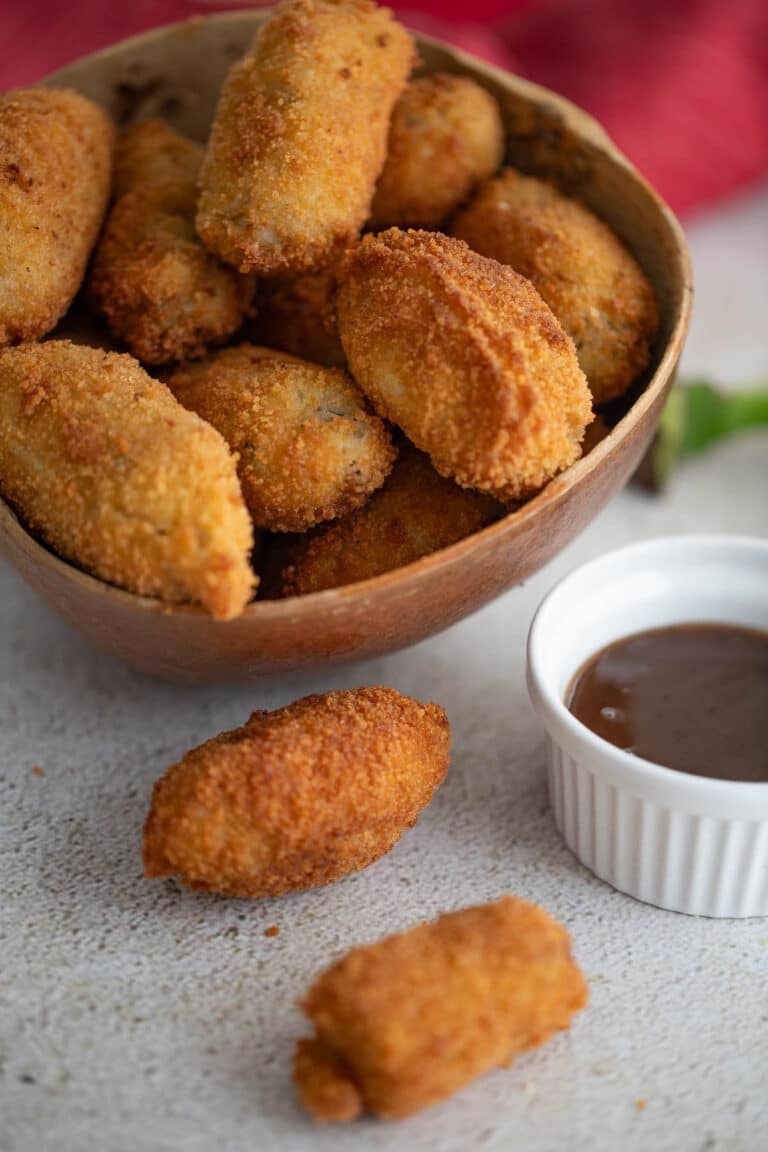How to make Trinidad coconut tart
A delectable pastry dough pocket filled with sweetened shredded coconut and “stewed” with additional spices like cinnamon, nutmeg, and ginger. Trinidad coconut tart is a beloved Caribbean snack, a golden pastry pocket filled with sweet, spiced coconut that hits every nostalgic note.
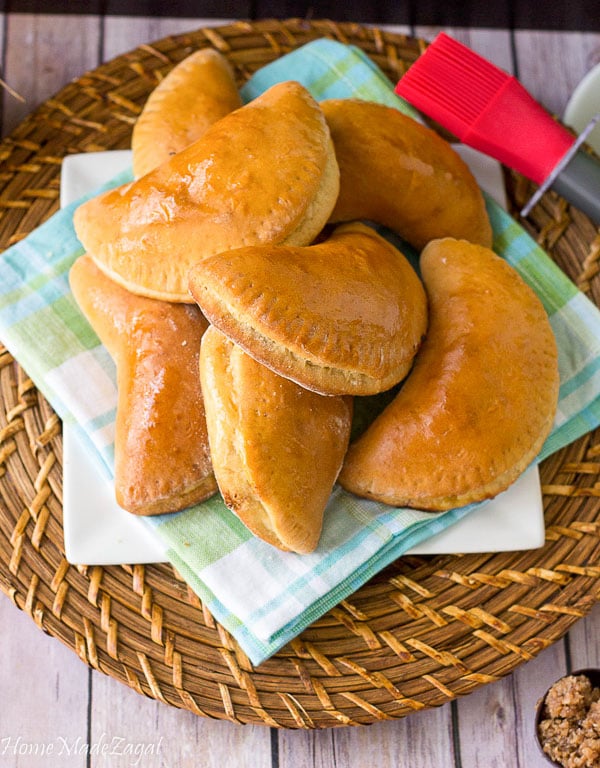
Trinidad coconut tart is one of those pastries that instantly makes you feel at home. A golden, flaky crust filled with sweetened coconut that’s simmered down with spices like cinnamon, nutmeg, and ginger — it’s the kind of snack that shows up at Saturday baking sessions and vanishes before the tray even cools.
In this post, we’re getting into how to make this beloved Caribbean treat from scratch, just like my aunt did back in the day, flour-covered from head to toe, churning out tarts in batches.
What is Trinidad-style coconut tart?
Trinidad coconut tart is a sweet hand pie-style pastry made with soft dough and a spiced coconut filling. While it may remind some of the Jamaican gizzada, our Trini version is fully enclosed; the coconut is tucked inside, not piled on top.
The filling is made with shredded coconut (preferably fresh), brown sugar, warm spices, and sometimes a hint of ginger or bay leaf. Everything gets wrapped in soft, slightly sweet dough and baked until golden. It’s a staple in local bakeries — and even more nostalgic when made at home.
How to make Trini coconut tart
Ingredients
This recipe uses simple pantry ingredients, but it’s the coconut that takes center stage. Here’s what you’ll need and why each one matters:
- Coconut
Fresh dry coconut is the gold standard here. Once you crack it open and shred the meat, the flavor is unmatched. If fresh isn’t an option (we’ve all been there), use unsweetened desiccated coconut, just give it a quick blitz in the food processor and a splash of water while cooking to soften it up.
- Sugar
I use brown sugar because it gives the filling a deeper, almost caramel-like flavor. Granulated sugar will still work, but brown sugar brings that extra something.
- Spices
A good mix of cinnamon, nutmeg, and a touch of ginger really brings warmth and depth to the filling. You can use fresh grated ginger or powdered — both work, but fresh adds a little zing.
- Flour & Fat
All-purpose flour is your base for the dough — stick with that and avoid cake or self-rising flour. For fat, I use Crisco or shortening to get that tender, flaky texture. Butter can work too, but the texture may be a bit different.
- Yeast & Sugar (for the dough)
This dough has a soft, slightly risen texture thanks to a touch of yeast and sugar. It’s not puff pastry, it’s better. A little rest time is all it needs to come together beautifully.
The full list of ingredients and quantities is listed in the recipe card below.
Instructions
Making this treat is a two-part process: first, the filling, then the dough, and finally, you bring them together in sweet coconut harmony. Let’s break it down so you’re never overwhelmed.
Step 1: Make the coconut filling
- 1. Prep the coconut
If you’re using a fresh coconut (yes, you’re doing the most and we love that), crack it open, remove the meat, and rinse it well. Cut into smaller chunks and shred them in a food processor.
Using packaged coconut? Give it a few pulses in the processor to break down those long strands. - 2. Cook the filling
In a pot over medium heat, combine the shredded coconut with brown sugar, cinnamon, nutmeg, grated ginger (or powder), and a bay leaf. Stir everything together and let it cook for about 10 minutes.
The coconut should soften, and the spices will come together into a thick, fragrant mix.
Note: If you’re using pre-packaged coconut, add a splash of water to help rehydrate it.
Step 2: Make the dough
- 3. Mix the dry ingredients
In a large bowl, combine flour, sugar, and yeast. - 4. Add fat and water
Cut in your Crisco (or shortening) and rub it into the flour until the texture is crumbly. Slowly add water until the dough comes together smoothly, soft but not sticky. - 5. Let it rest
Then cover the dough with plastic wrap or a clean towel and let it rest for 30 minutes. After that, divide the dough into about 16 small balls, then let those rest again for another 20 minutes under a damp towel. This helps them roll out nicely.
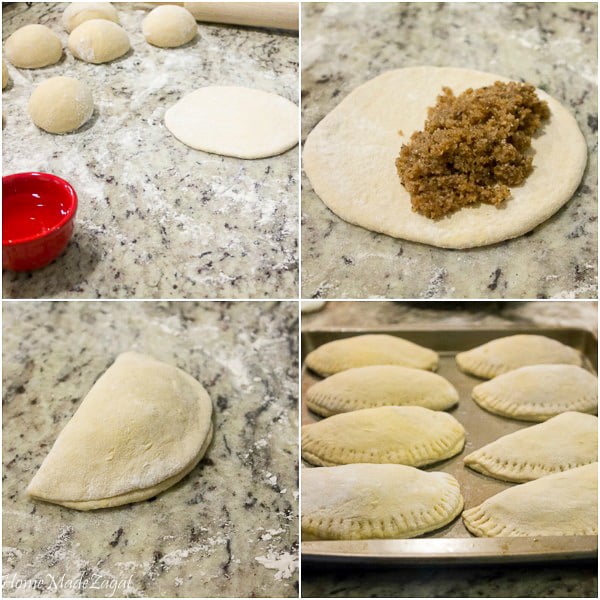
Step 3: Fill, seal and bake
- 6. Preheat the oven
Set your oven to 350°F. Lightly grease your baking sheet. - 7. Fill the tarts
Roll out each dough ball on a floured surface to form a circle. Place about 2 tablespoons of coconut filling on one side of the circle. Dampen the edges with water, then fold over and press to seal. Use a fork to crimp the edges. Pretty and practical. - 8. Bake
Arrange your sealed tarts on the baking sheet and bake for 20 minutes. - 9. Glaze
Remove the tarts, brush them with a sugar glaze (or egg wash if that’s your thing), and pop them back in for another 5 minutes to get that golden finish. - 10. Cool (seriously, wait)
The smell will test your patience, but let them cool on a wire rack. Hot coconut filling will humble you. Once cooled, bite in and enjoy the spice-filled magic.
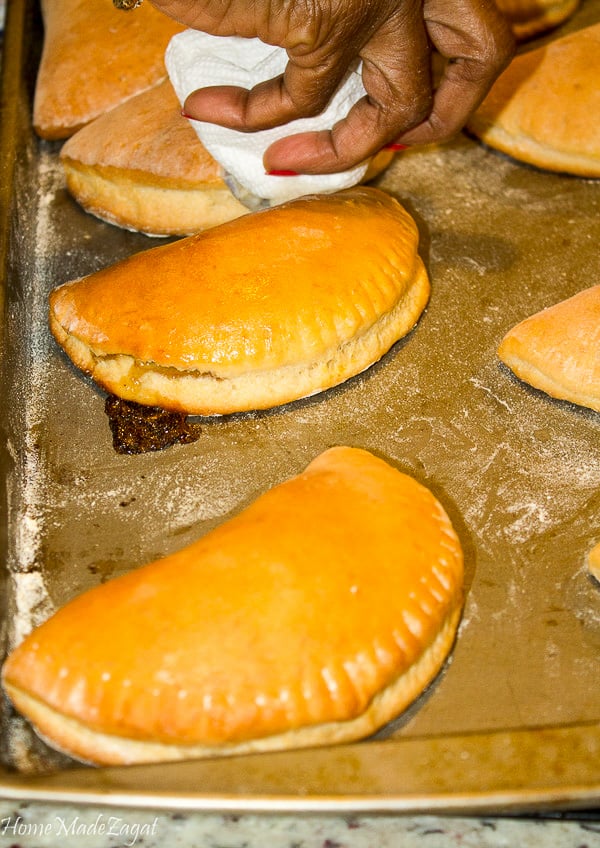
Storage & Reheating
When the tarts have cooled all the way down, it is best to store them in an air tight container. It can be a Ziploc bag or a container with a cover. They can be stored on the counter for up to three days. Then would need to be stored in the fridge.
It can be eaten from the fridge or reheated in your toaster oven or air fryer
More coconut treats to try:
If you’re loving that rich, spiced coconut filling, here are a few more Caribbean coconut bakes worth checking out:
- Sweet Bread – Our beloved coconut loaf, packed with flavor and perfect year-round.
- Coconut Bread Pudding – A soft, comforting twist on a classic.
- Coconut Drops – Chewy, spiced, and easy to whip up.
Looking for more traditional Caribbean sweets? Try:
- Cassava Pone – Sticky, sweet, and loaded with spice.
- Banana Fritters – A quick, golden treat with ripe banana goodness.
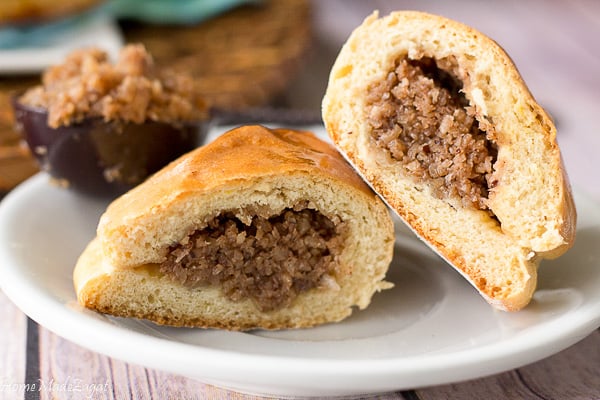
Frequently Asked Questions
Yes, if fresh coconut isn’t available, unsweetened desiccated coconut works just fine. Just pulse it a few times in a food processor to break down the longer pieces, and add a little water while cooking to help soften it. Want tips on choosing a fresh coconut? I’ve got a full guide in this post on homemade coconut milk.
These tarts can stay fresh at room temperature for about two days, just store them in an airtight container. Then wrap them individually in plastic wrap and store in the fridge. To enjoy again, bring them to room temperature or pop them in the oven at 300°F for 5–7 minutes to warm them up.
Absolutely. Once the tarts are fully cooled, wrap them tightly and freeze for up to 2 months. When you’re ready, let them thaw and reheat in the oven until warm and flaky again.
Ready to bake?
If you give this Trinidad coconut tart a try, I’d love to hear how it turned out! Leave a comment below or tag @thisbagogirl when you share your batch. I’m always here for a good coconut moment.
Recipe

Trinidad Coconut Tart
Ingredients
Method
- Mix water with sugar
- Brush mixture on baked tarts (After first 20 minutes)
- In a pan, on medium heat combine coconut, nutmeg, cinnamon, sugar, ginger, and bay leaf.
- Mix for about 15 minutes (till flavors are combined and coconut is tender)
- Set aside
- Add flour, sugar and yeast, crisco to a bowl and combine ensuring that crisco is well incorporated into mixture.
- Add water, in sections, to flour mixture (and coloring if using) until a smooth texture is achieved.
- Make dough into a ball and leave to sit for 30 minutes.
- Separate dough into approximately 16 balls. (big enough to hold approximately 2 tablespoons of coconut)
- Cover with a damp towel (let sit for 20 minutes)
- Heat oven to 350 degrees
- Lightly grease a baking sheet
- Roll out dough balls into circles.
- Place approx 2 tablespoons of coconut mixture on one-half of dough
- Dampen edges of dough circle with water.
- Fold over half of dough over coconut
- Seal edges with a fork
- Repeat till all dough is filled with coconut
- Place on baking sheet and bake for 20 minutes
- Brush glaze on baked tarts
- Bake for another five minutes
- Set aside to cool (Be careful. Hot coconut can burn)
